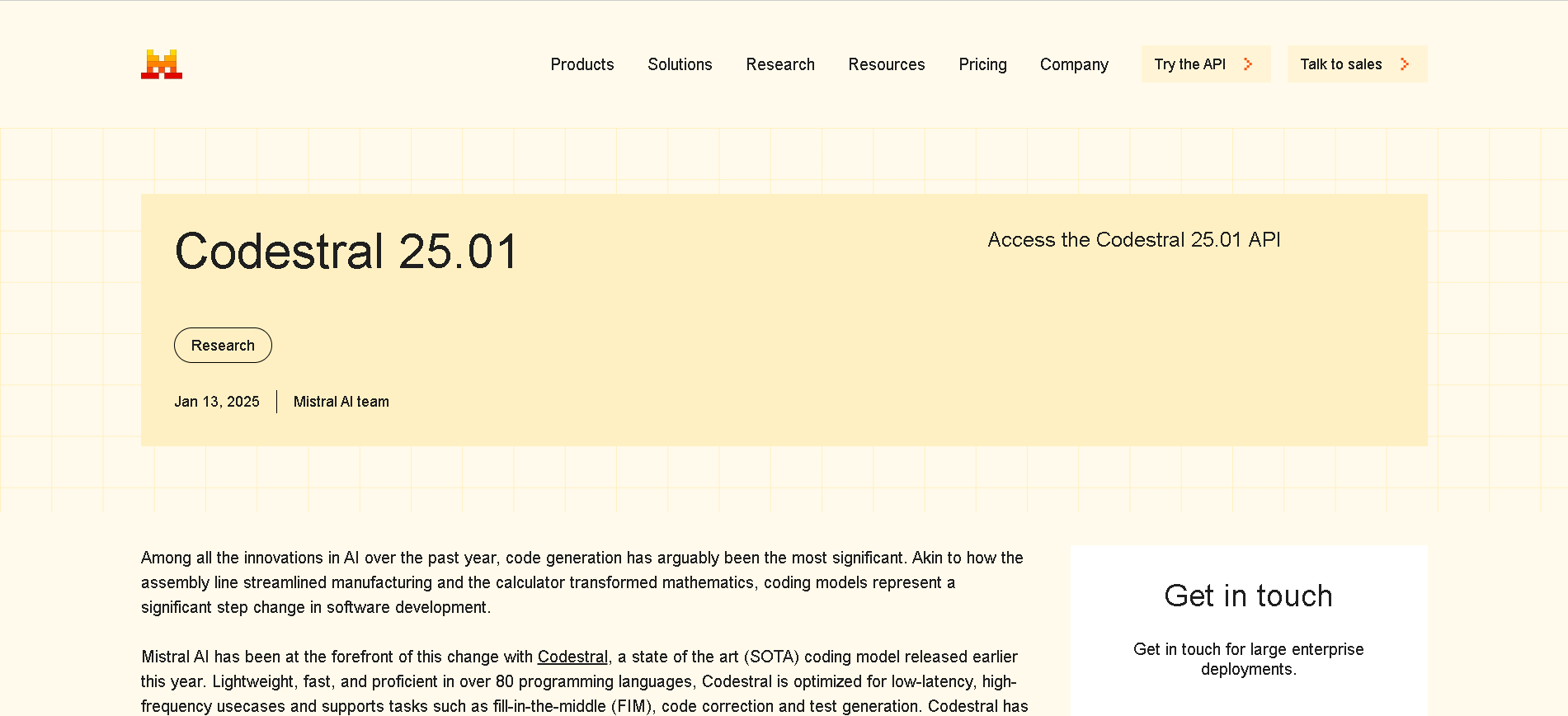
- Developers & Engineers: Ideal for autocomplete in IDEs, generating snippets, tests, and FIM tasks in real time.
- Technical Teams: Accelerate code reviews, bug fixes, and multi-language code generation.
- Researchers & Benchmarkers: Evaluate state-of-the-art code LLMs in FIM tasks and speed benchmarks.
- Enterprise DevOps: Deploy locally or in VPCs for secure, scalable code generation workflows.
- Starter to Advanced Programmers: Use via Continue IDE plugins for VS Code or JetBrains to boost productivity instantly.
How to Use Codestral 25.01?
- API Access: Available globally via Mistral’s “`codestral-2501`” endpoint on multiple platforms.
- Integrate in IDEs: Select Codestral 25.01 in Continue plugin for VS Code/JetBrains for real-time code assistance.
- Utilize FIM Mode: Use fill-in-the-middle prompts for snippet completion or test generation within existing code.
- Leverage Long Context: Handle entire repositories or large files with 256K tokens context.
- Self-Host: Support for local or private deployment to meet enterprise security and residency requirements.
- Twice the Speed: About 2× faster code generation than Codestral 24.05, thanks to architectural improvements.
- FIM Benchmark Leader: Clear #1 on FIM tasks, with 95.3% average pass@1 across Python, Java, and JS.
- Wide Language Support: Proficient in 80+ languages including Python, SQL, C++, JS, Bash, TypeScript, C#, Swift, and Fortran.
- Huge Context Capability: 256K-token window supports large codebases or multi-file contexts seamlessly.
- Flexible Deployment: Use via API (Google Vertex AI, Azure preview, Bedrock soon) or self-hosting within secure environments.
- Industry-leading FIM performance with high pass@1 scores
- Blazingly fast—twice the speed of previous version
- Handles massive context windows for real-code scenarios
- Easy IDE integration via Continue plugin
- Secure options: API or private hosting
- Not open weight—you can't run the model fully locally
- May lag behind in niche languages (e.g. C#, Bash showing lower performance)
Chat
0/$14.99/$24.99 per month
Free - $0
Pro - $14.99 per month
Enterprise - $24.99 per month
API
$0.3/$0.9 per 1M tokens
$0.9 per 1M output tokens
Proud of the love you're getting? Show off your AI Toolbook reviews—then invite more fans to share the love and build your credibility.
Add an AI Toolbook badge to your site—an easy way to drive followers, showcase updates, and collect reviews. It's like a mini 24/7 billboard for your AI.
Reviews
Rating Distribution
Average score
Popular Mention
FAQs
Similar AI Tools


OpenAI - GPT 4.1
GPT-4.1 is OpenAI’s newest multimodal large language model, designed to deliver highly capable, efficient, and intelligent performance across a broad range of tasks. It builds on the foundation of GPT-4 and GPT-4 Turbo, offering enhanced reasoning, greater factual accuracy, and smoother integration with tools like code interpreters, retrieval systems, and image understanding. With native support for a 128K token context window, function calling, and robust tool usage, GPT-4.1 brings AI closer to behaving like a reliable, adaptive assistant—ready to work, build, and collaborate across tasks with speed and precision.


OpenAI - GPT 4.1
GPT-4.1 is OpenAI’s newest multimodal large language model, designed to deliver highly capable, efficient, and intelligent performance across a broad range of tasks. It builds on the foundation of GPT-4 and GPT-4 Turbo, offering enhanced reasoning, greater factual accuracy, and smoother integration with tools like code interpreters, retrieval systems, and image understanding. With native support for a 128K token context window, function calling, and robust tool usage, GPT-4.1 brings AI closer to behaving like a reliable, adaptive assistant—ready to work, build, and collaborate across tasks with speed and precision.


OpenAI - GPT 4.1
GPT-4.1 is OpenAI’s newest multimodal large language model, designed to deliver highly capable, efficient, and intelligent performance across a broad range of tasks. It builds on the foundation of GPT-4 and GPT-4 Turbo, offering enhanced reasoning, greater factual accuracy, and smoother integration with tools like code interpreters, retrieval systems, and image understanding. With native support for a 128K token context window, function calling, and robust tool usage, GPT-4.1 brings AI closer to behaving like a reliable, adaptive assistant—ready to work, build, and collaborate across tasks with speed and precision.

codex-mini-latest is OpenAI’s lightweight, high-speed AI coding model, fine-tuned from the o4-mini architecture. Designed specifically for use with the Codex CLI, it brings ChatGPT-level reasoning directly to your terminal, enabling efficient code generation, debugging, and editing tasks. Despite its compact size, codex-mini-latest delivers impressive performance, making it ideal for developers seeking a fast, cost-effective coding assistant.


OpenAI Codex mini ..
codex-mini-latest is OpenAI’s lightweight, high-speed AI coding model, fine-tuned from the o4-mini architecture. Designed specifically for use with the Codex CLI, it brings ChatGPT-level reasoning directly to your terminal, enabling efficient code generation, debugging, and editing tasks. Despite its compact size, codex-mini-latest delivers impressive performance, making it ideal for developers seeking a fast, cost-effective coding assistant.


OpenAI Codex mini ..
codex-mini-latest is OpenAI’s lightweight, high-speed AI coding model, fine-tuned from the o4-mini architecture. Designed specifically for use with the Codex CLI, it brings ChatGPT-level reasoning directly to your terminal, enabling efficient code generation, debugging, and editing tasks. Despite its compact size, codex-mini-latest delivers impressive performance, making it ideal for developers seeking a fast, cost-effective coding assistant.
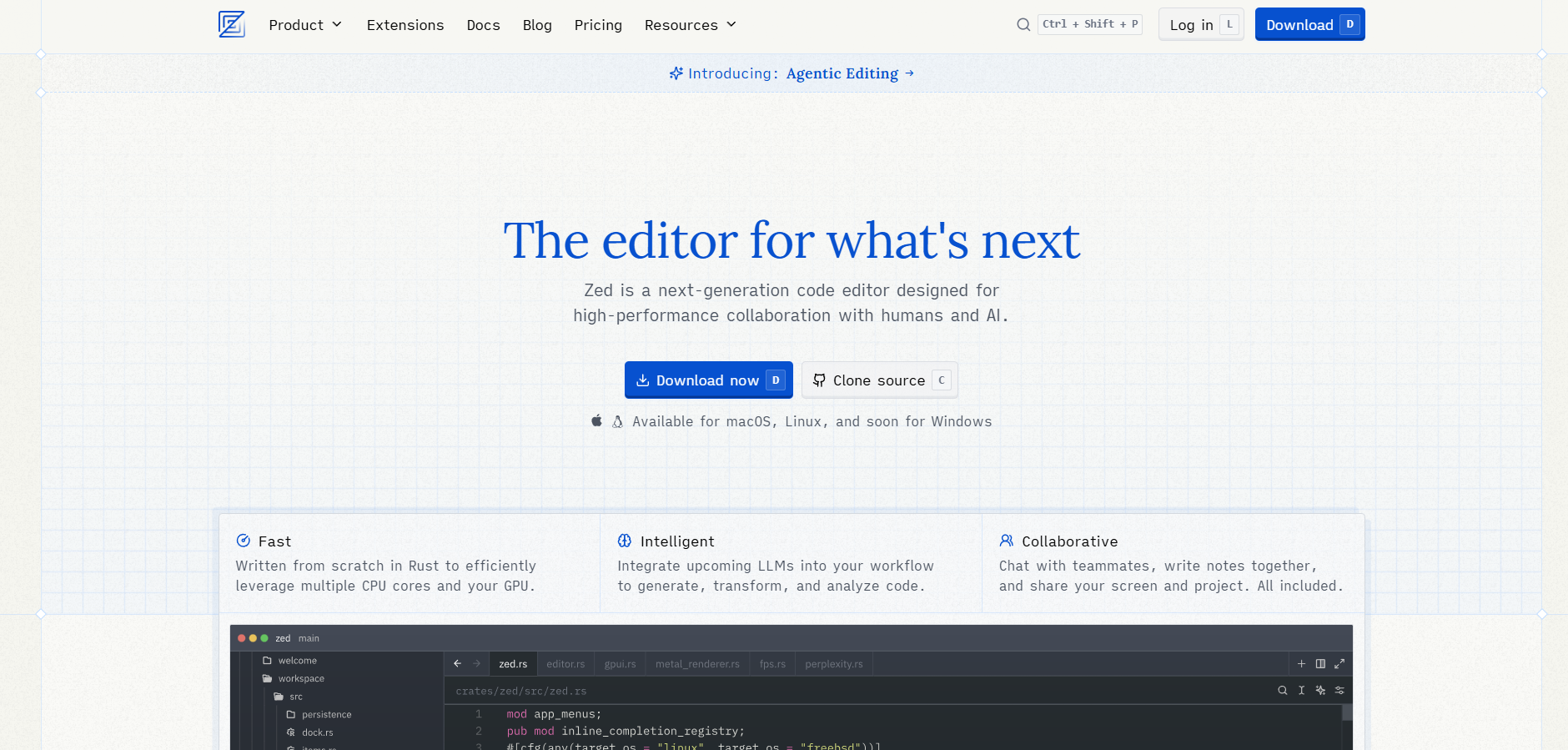

Zed
Zed is a high-performance, open-source code editor built for speed and collaboration. It combines lightning-fast responsiveness with built-in real-time collaboration and AI-assisted code editing, redefining editor precision and coding velocity.


Zed
Zed is a high-performance, open-source code editor built for speed and collaboration. It combines lightning-fast responsiveness with built-in real-time collaboration and AI-assisted code editing, redefining editor precision and coding velocity.


Zed
Zed is a high-performance, open-source code editor built for speed and collaboration. It combines lightning-fast responsiveness with built-in real-time collaboration and AI-assisted code editing, redefining editor precision and coding velocity.
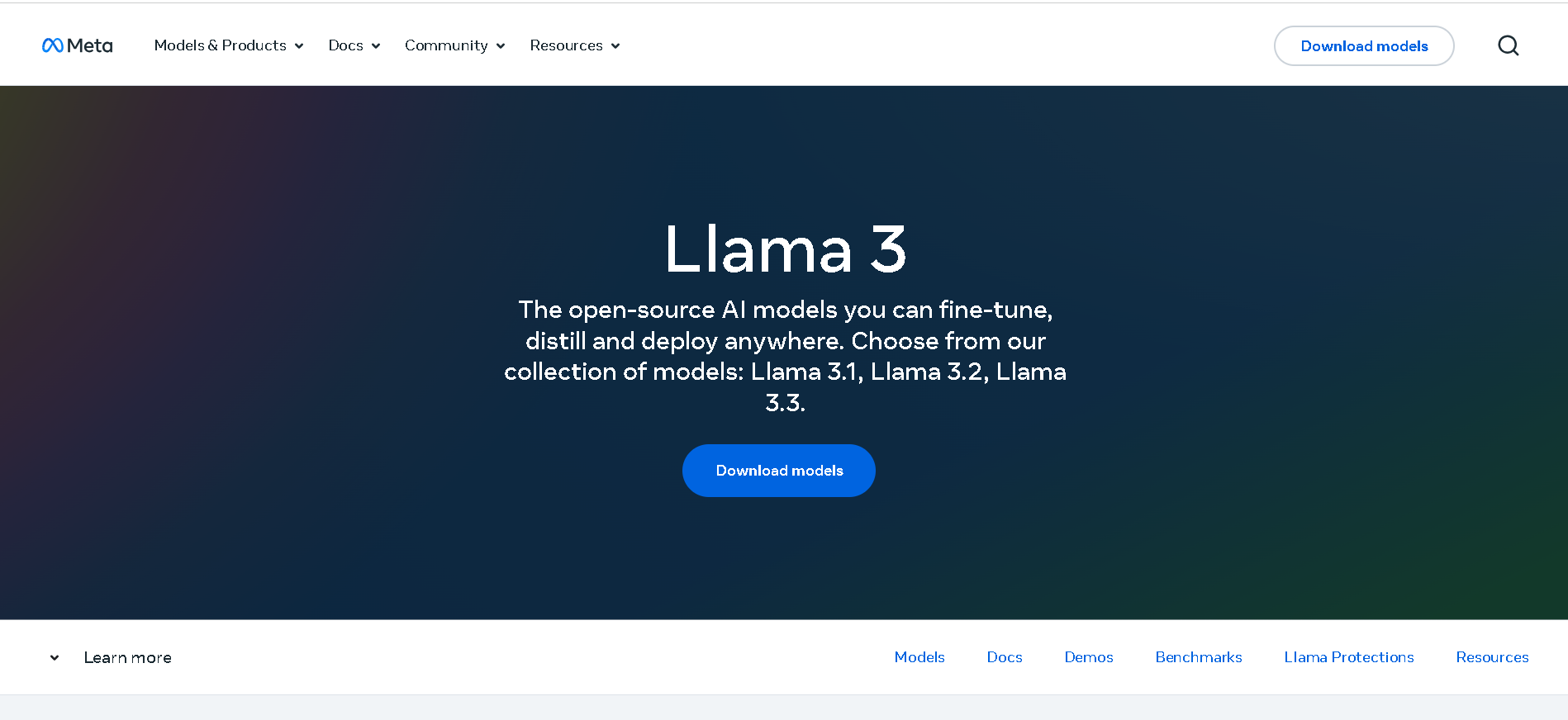

Meta Llama 3
Meta Llama 3 is Meta’s third-generation open-weight large language model family, released in April 2024 and enhanced in July 2024 with the 3.1 update. It spans three sizes—8B, 70B, and 405B parameters—each offering a 128K‑token context window. Llama 3 excels at reasoning, code generation, multilingual text, and instruction-following, and introduces multimodal vision (image understanding) capabilities in its 3.2 series. Robust safety mechanisms like Llama Guard 3, Code Shield, and CyberSec Eval 2 ensure responsible output.


Meta Llama 3
Meta Llama 3 is Meta’s third-generation open-weight large language model family, released in April 2024 and enhanced in July 2024 with the 3.1 update. It spans three sizes—8B, 70B, and 405B parameters—each offering a 128K‑token context window. Llama 3 excels at reasoning, code generation, multilingual text, and instruction-following, and introduces multimodal vision (image understanding) capabilities in its 3.2 series. Robust safety mechanisms like Llama Guard 3, Code Shield, and CyberSec Eval 2 ensure responsible output.


Meta Llama 3
Meta Llama 3 is Meta’s third-generation open-weight large language model family, released in April 2024 and enhanced in July 2024 with the 3.1 update. It spans three sizes—8B, 70B, and 405B parameters—each offering a 128K‑token context window. Llama 3 excels at reasoning, code generation, multilingual text, and instruction-following, and introduces multimodal vision (image understanding) capabilities in its 3.2 series. Robust safety mechanisms like Llama Guard 3, Code Shield, and CyberSec Eval 2 ensure responsible output.
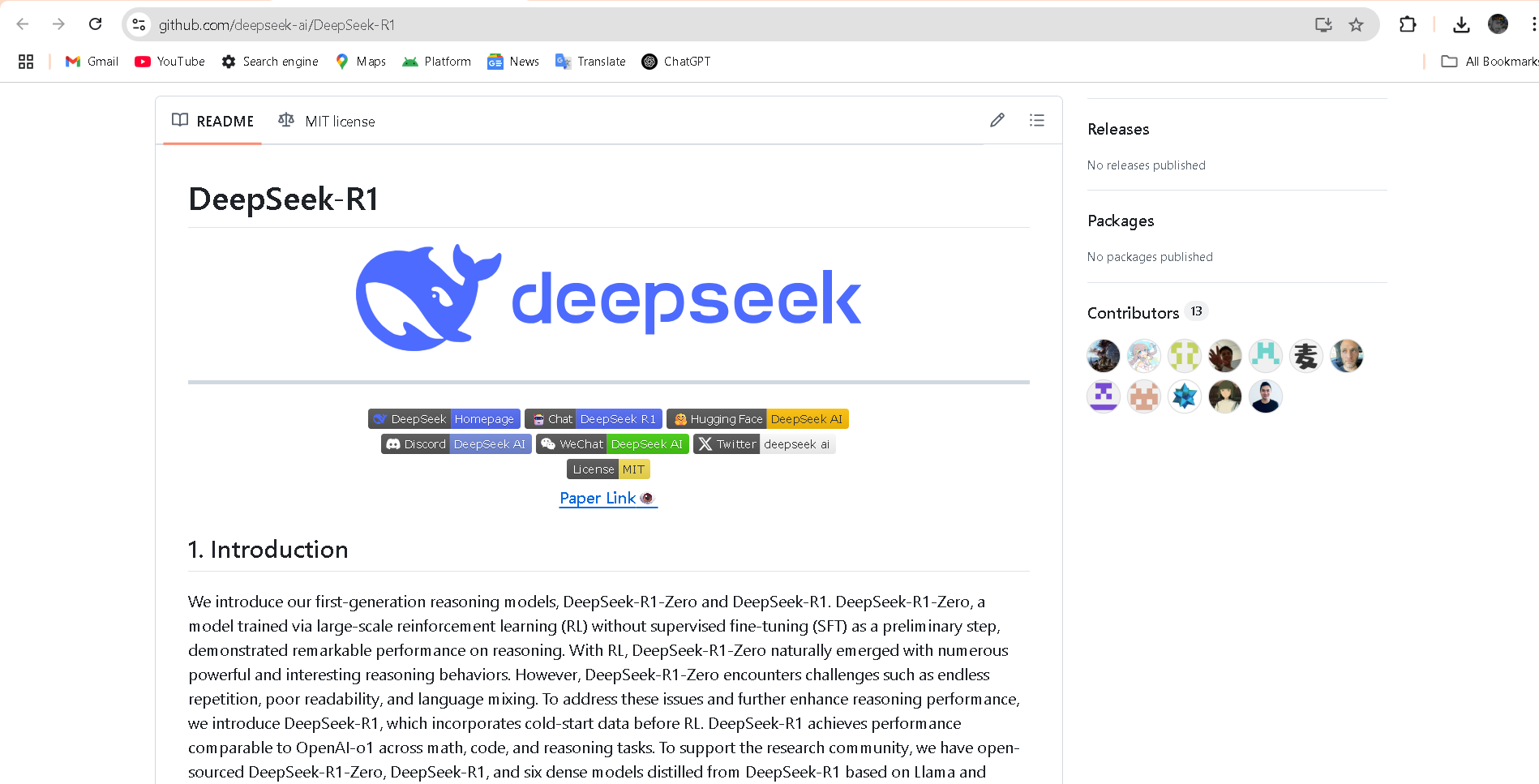

DeepSeek-R1-Distil..
DeepSeek R1 Distill Qwen‑32B is a 32-billion-parameter dense reasoning model released in early 2025. Distilled from the flagship DeepSeek R1 using Qwen 2.5‑32B as a base, it delivers state-of-the-art performance among dense LLMs—outperforming OpenAI’s o1‑mini on benchmarks like AIME, MATH‑500, GPQA Diamond, LiveCodeBench, and CodeForces rating.


DeepSeek-R1-Distil..
DeepSeek R1 Distill Qwen‑32B is a 32-billion-parameter dense reasoning model released in early 2025. Distilled from the flagship DeepSeek R1 using Qwen 2.5‑32B as a base, it delivers state-of-the-art performance among dense LLMs—outperforming OpenAI’s o1‑mini on benchmarks like AIME, MATH‑500, GPQA Diamond, LiveCodeBench, and CodeForces rating.


DeepSeek-R1-Distil..
DeepSeek R1 Distill Qwen‑32B is a 32-billion-parameter dense reasoning model released in early 2025. Distilled from the flagship DeepSeek R1 using Qwen 2.5‑32B as a base, it delivers state-of-the-art performance among dense LLMs—outperforming OpenAI’s o1‑mini on benchmarks like AIME, MATH‑500, GPQA Diamond, LiveCodeBench, and CodeForces rating.
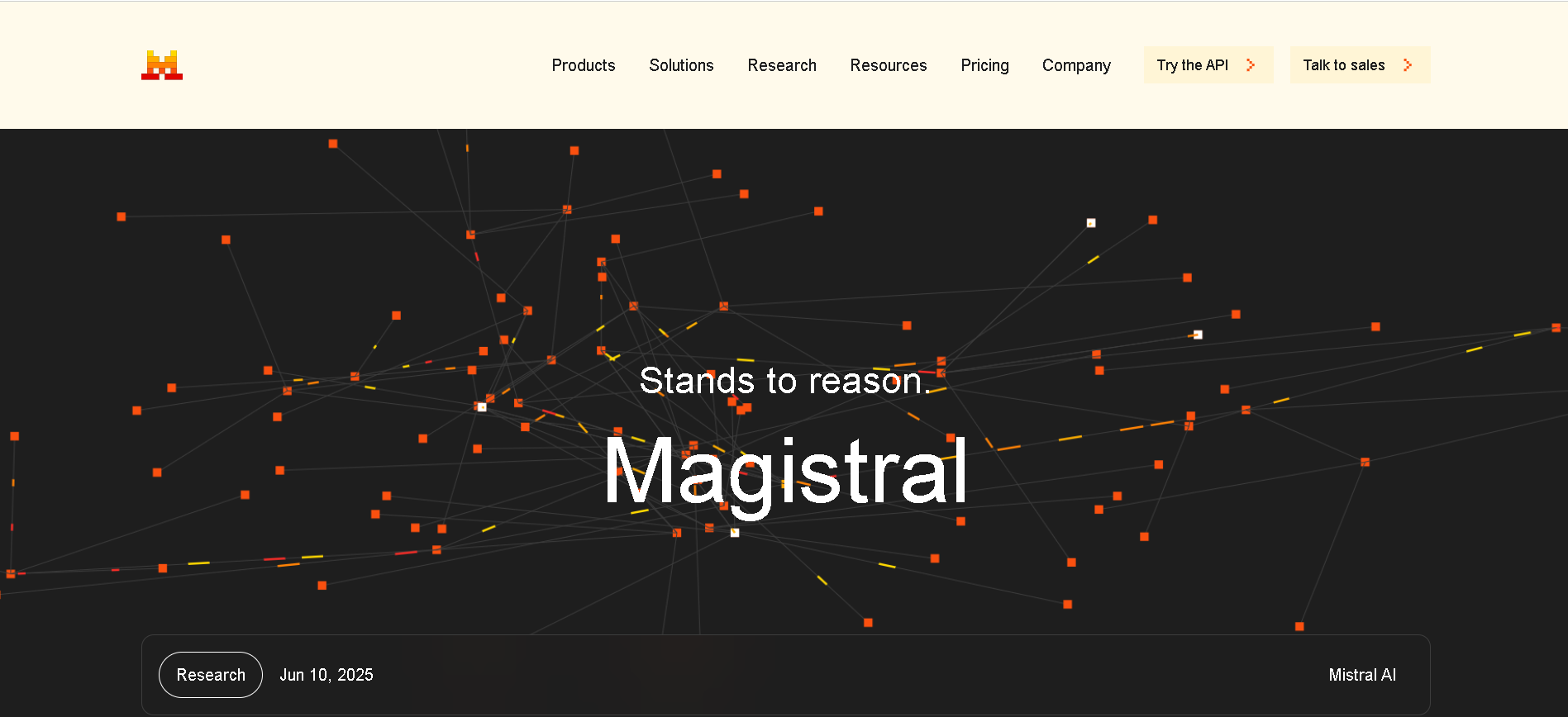
Mistral Magistral
Magistral is Mistral AI’s first dedicated reasoning model, released on June 10, 2025, available in two versions: open-source 24 B Magistral Small and enterprise-grade Magistral Medium. It’s built to provide transparent, multilingual, domain-specific chain-of-thought reasoning, excelling in step-by-step logic tasks like math, finance, legal, and engineering.

Mistral Magistral
Magistral is Mistral AI’s first dedicated reasoning model, released on June 10, 2025, available in two versions: open-source 24 B Magistral Small and enterprise-grade Magistral Medium. It’s built to provide transparent, multilingual, domain-specific chain-of-thought reasoning, excelling in step-by-step logic tasks like math, finance, legal, and engineering.

Mistral Magistral
Magistral is Mistral AI’s first dedicated reasoning model, released on June 10, 2025, available in two versions: open-source 24 B Magistral Small and enterprise-grade Magistral Medium. It’s built to provide transparent, multilingual, domain-specific chain-of-thought reasoning, excelling in step-by-step logic tasks like math, finance, legal, and engineering.
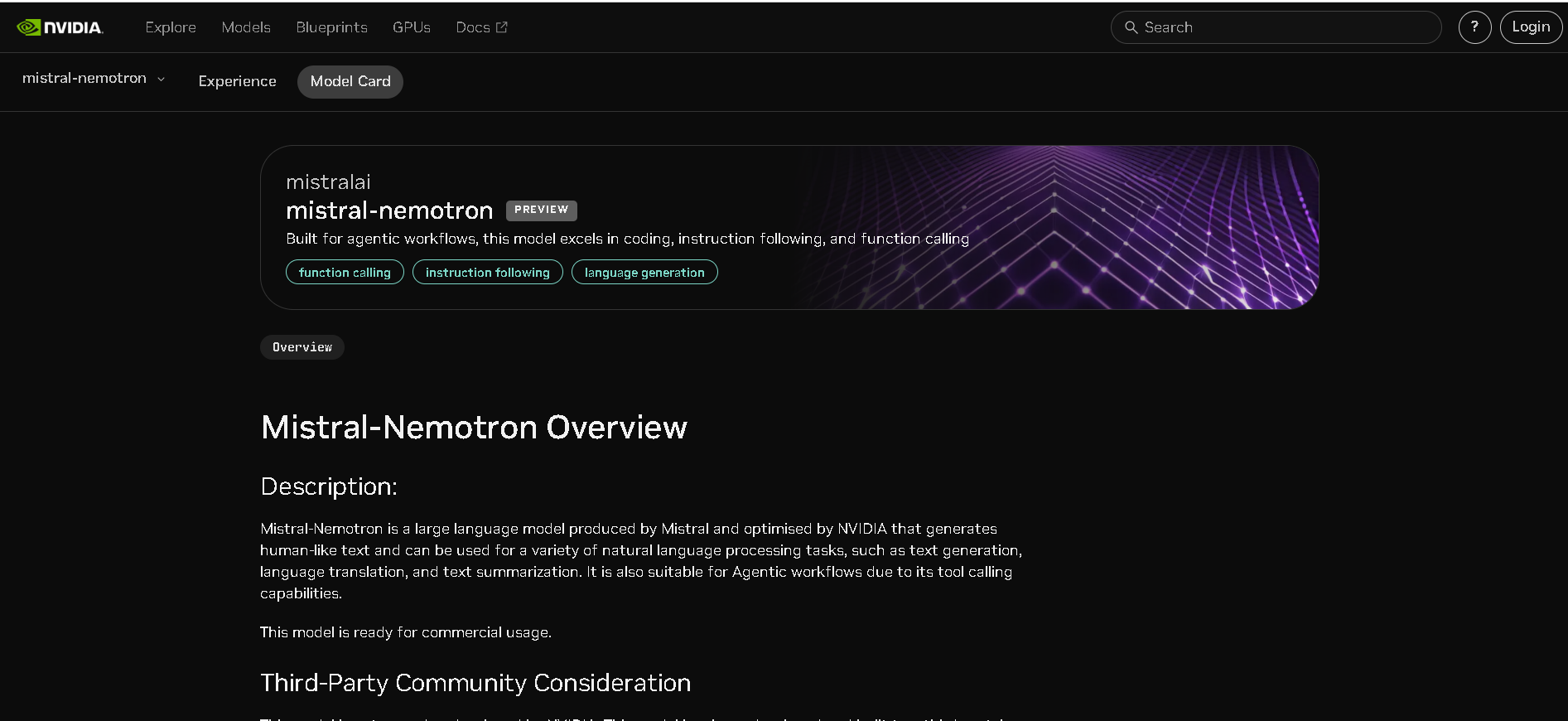
Mistral Nemotron
Mistral Nemotron is a preview large language model, jointly developed by Mistral AI and NVIDIA, released on June 11, 2025. Optimized by NVIDIA for inference using TensorRT-LLM and vLLM, it supports a massive 128K-token context window and is built for agentic workflows—excelling in instruction-following, function calling, and code generation—while delivering state-of-the-art performance across reasoning, math, coding, and multilingual benchmarks.

Mistral Nemotron
Mistral Nemotron is a preview large language model, jointly developed by Mistral AI and NVIDIA, released on June 11, 2025. Optimized by NVIDIA for inference using TensorRT-LLM and vLLM, it supports a massive 128K-token context window and is built for agentic workflows—excelling in instruction-following, function calling, and code generation—while delivering state-of-the-art performance across reasoning, math, coding, and multilingual benchmarks.

Mistral Nemotron
Mistral Nemotron is a preview large language model, jointly developed by Mistral AI and NVIDIA, released on June 11, 2025. Optimized by NVIDIA for inference using TensorRT-LLM and vLLM, it supports a massive 128K-token context window and is built for agentic workflows—excelling in instruction-following, function calling, and code generation—while delivering state-of-the-art performance across reasoning, math, coding, and multilingual benchmarks.
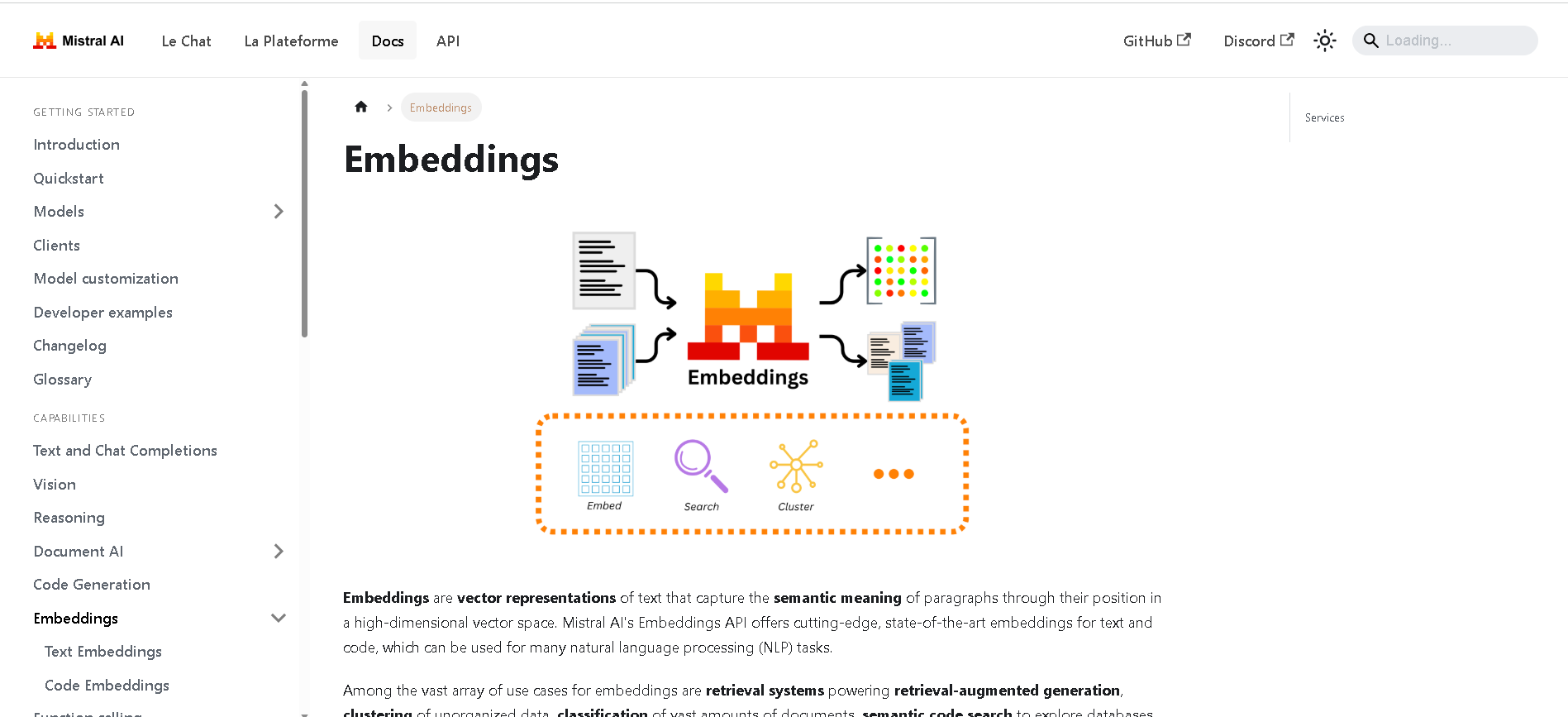
Mistral Embed
Mistral Embed is Mistral AI’s high-performance text embedding model designed for semantic retrieval, clustering, classification, and retrieval-augmented generation (RAG). With support for up to 8,192 tokens and producing 1,024-dimensional vectors, it delivers state-of-the-art semantic similarity and organization capabilities.

Mistral Embed
Mistral Embed is Mistral AI’s high-performance text embedding model designed for semantic retrieval, clustering, classification, and retrieval-augmented generation (RAG). With support for up to 8,192 tokens and producing 1,024-dimensional vectors, it delivers state-of-the-art semantic similarity and organization capabilities.

Mistral Embed
Mistral Embed is Mistral AI’s high-performance text embedding model designed for semantic retrieval, clustering, classification, and retrieval-augmented generation (RAG). With support for up to 8,192 tokens and producing 1,024-dimensional vectors, it delivers state-of-the-art semantic similarity and organization capabilities.
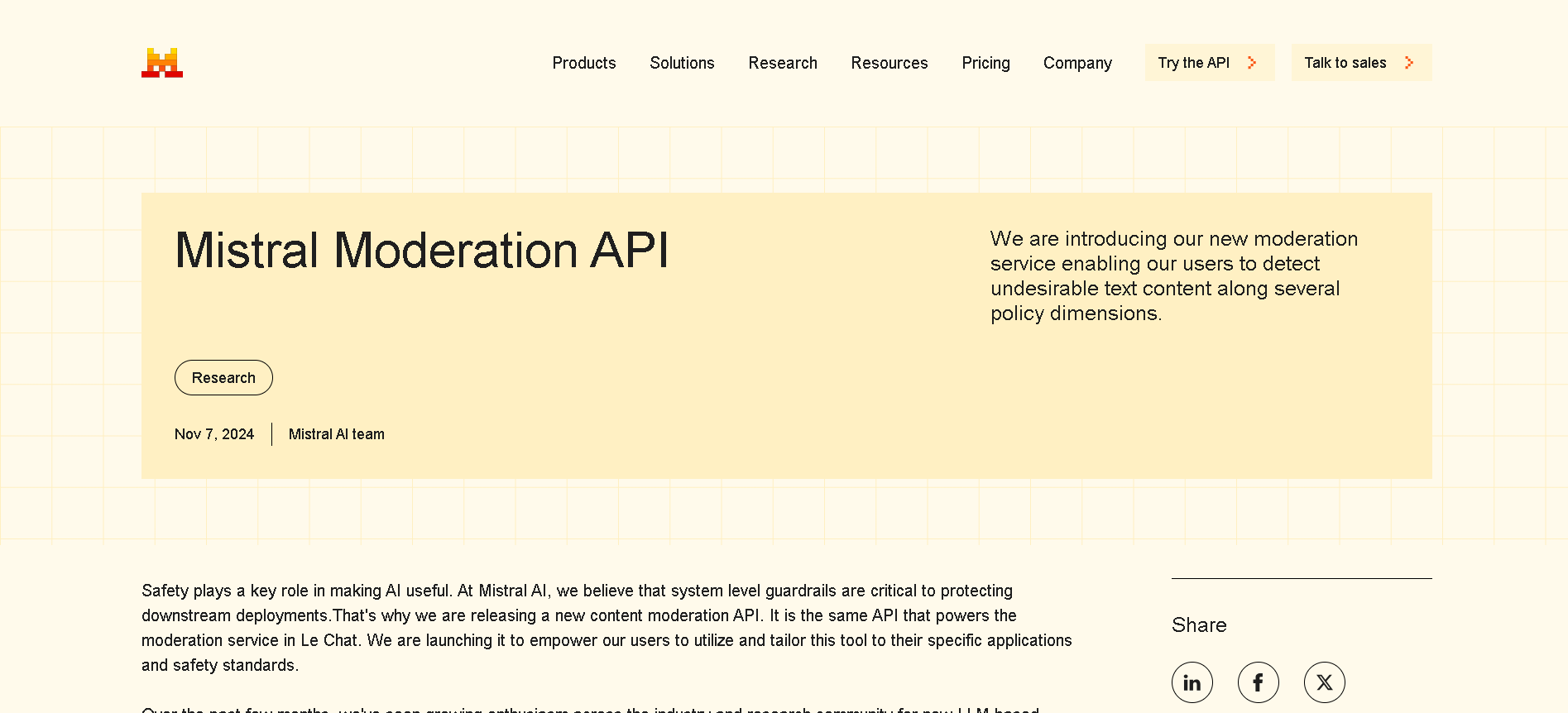
Mistral Moderation..
Mistral Moderation API is a content moderation service released in November 2024, powered by a fine-tuned version of Mistral’s Ministral 8B model. It classifies text across nine safety categories—sexual content, hate/discrimination, violence/threats, dangerous/criminal instructions, self‑harm, health, financial, legal, and personally identifiable information (PII). It offers two endpoints: one for raw text and one optimized for conversational content.

Mistral Moderation..
Mistral Moderation API is a content moderation service released in November 2024, powered by a fine-tuned version of Mistral’s Ministral 8B model. It classifies text across nine safety categories—sexual content, hate/discrimination, violence/threats, dangerous/criminal instructions, self‑harm, health, financial, legal, and personally identifiable information (PII). It offers two endpoints: one for raw text and one optimized for conversational content.

Mistral Moderation..
Mistral Moderation API is a content moderation service released in November 2024, powered by a fine-tuned version of Mistral’s Ministral 8B model. It classifies text across nine safety categories—sexual content, hate/discrimination, violence/threats, dangerous/criminal instructions, self‑harm, health, financial, legal, and personally identifiable information (PII). It offers two endpoints: one for raw text and one optimized for conversational content.
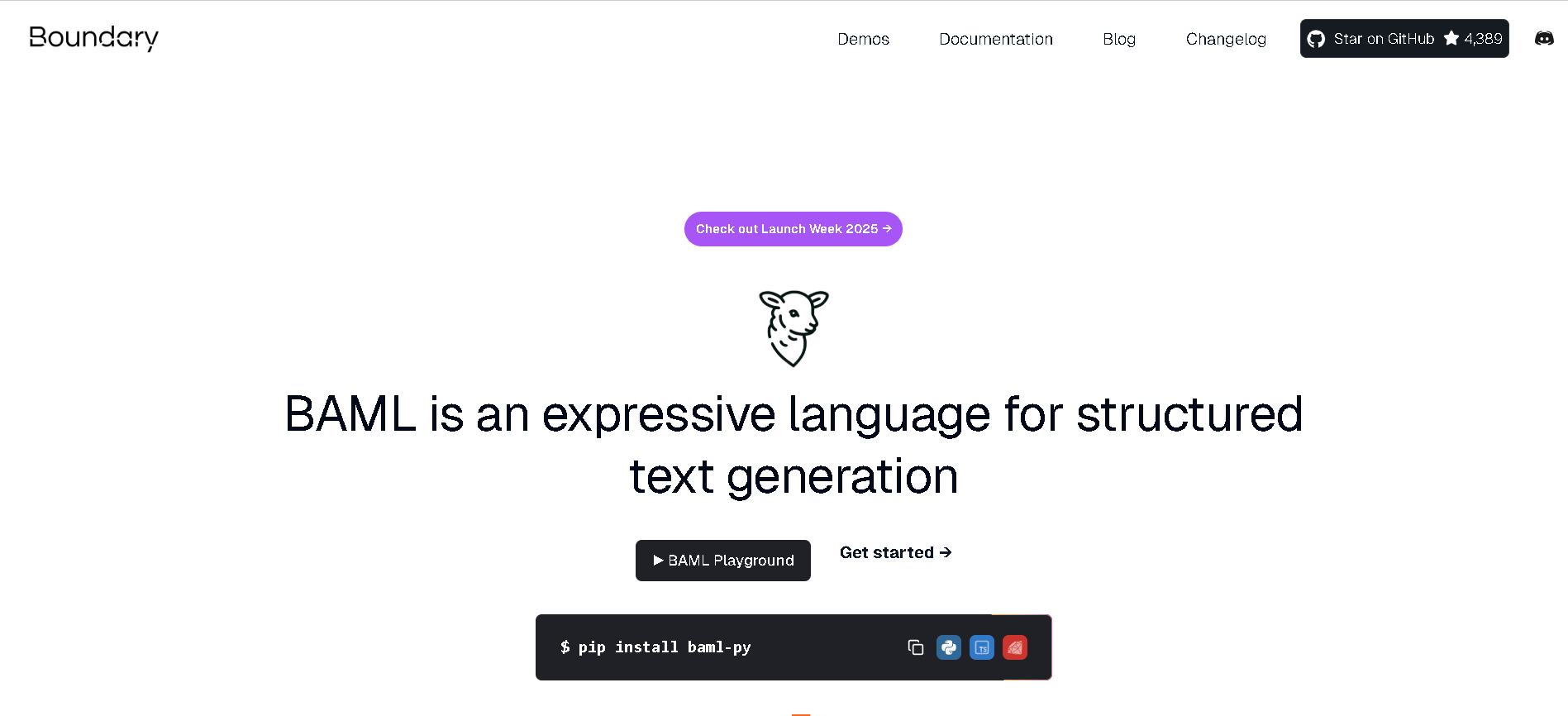
Boundary AI
BoundaryML.com introduces BAML, an expressive language specifically designed for structured text generation with Large Language Models (LLMs). Its primary purpose is to simplify and enhance the process of obtaining structured data (like JSON) from LLMs, moving beyond the challenges of traditional methods by providing robust parsing, error correction, and reliable function-calling capabilities.

Boundary AI
BoundaryML.com introduces BAML, an expressive language specifically designed for structured text generation with Large Language Models (LLMs). Its primary purpose is to simplify and enhance the process of obtaining structured data (like JSON) from LLMs, moving beyond the challenges of traditional methods by providing robust parsing, error correction, and reliable function-calling capabilities.

Boundary AI
BoundaryML.com introduces BAML, an expressive language specifically designed for structured text generation with Large Language Models (LLMs). Its primary purpose is to simplify and enhance the process of obtaining structured data (like JSON) from LLMs, moving beyond the challenges of traditional methods by providing robust parsing, error correction, and reliable function-calling capabilities.


Unsloth AI
Unsloth.AI is an open-source platform designed to accelerate and simplify the fine-tuning of large language models (LLMs). By leveraging manual mathematical derivations, custom GPU kernels, and efficient optimization techniques, Unsloth achieves up to 30x faster training speeds compared to traditional methods, without compromising model accuracy. It supports a wide range of popular models, including Llama, Mistral, Gemma, and BERT, and works seamlessly on various GPUs, from consumer-grade Tesla T4 to high-end H100, as well as AMD and Intel GPUs. Unsloth empowers developers, researchers, and AI enthusiasts to fine-tune models efficiently, even with limited computational resources, democratizing access to advanced AI model customization. With a focus on performance, scalability, and flexibility, Unsloth.AI is suitable for both academic research and commercial applications, helping users deploy specialized AI solutions faster and more effectively.


Unsloth AI
Unsloth.AI is an open-source platform designed to accelerate and simplify the fine-tuning of large language models (LLMs). By leveraging manual mathematical derivations, custom GPU kernels, and efficient optimization techniques, Unsloth achieves up to 30x faster training speeds compared to traditional methods, without compromising model accuracy. It supports a wide range of popular models, including Llama, Mistral, Gemma, and BERT, and works seamlessly on various GPUs, from consumer-grade Tesla T4 to high-end H100, as well as AMD and Intel GPUs. Unsloth empowers developers, researchers, and AI enthusiasts to fine-tune models efficiently, even with limited computational resources, democratizing access to advanced AI model customization. With a focus on performance, scalability, and flexibility, Unsloth.AI is suitable for both academic research and commercial applications, helping users deploy specialized AI solutions faster and more effectively.


Unsloth AI
Unsloth.AI is an open-source platform designed to accelerate and simplify the fine-tuning of large language models (LLMs). By leveraging manual mathematical derivations, custom GPU kernels, and efficient optimization techniques, Unsloth achieves up to 30x faster training speeds compared to traditional methods, without compromising model accuracy. It supports a wide range of popular models, including Llama, Mistral, Gemma, and BERT, and works seamlessly on various GPUs, from consumer-grade Tesla T4 to high-end H100, as well as AMD and Intel GPUs. Unsloth empowers developers, researchers, and AI enthusiasts to fine-tune models efficiently, even with limited computational resources, democratizing access to advanced AI model customization. With a focus on performance, scalability, and flexibility, Unsloth.AI is suitable for both academic research and commercial applications, helping users deploy specialized AI solutions faster and more effectively.
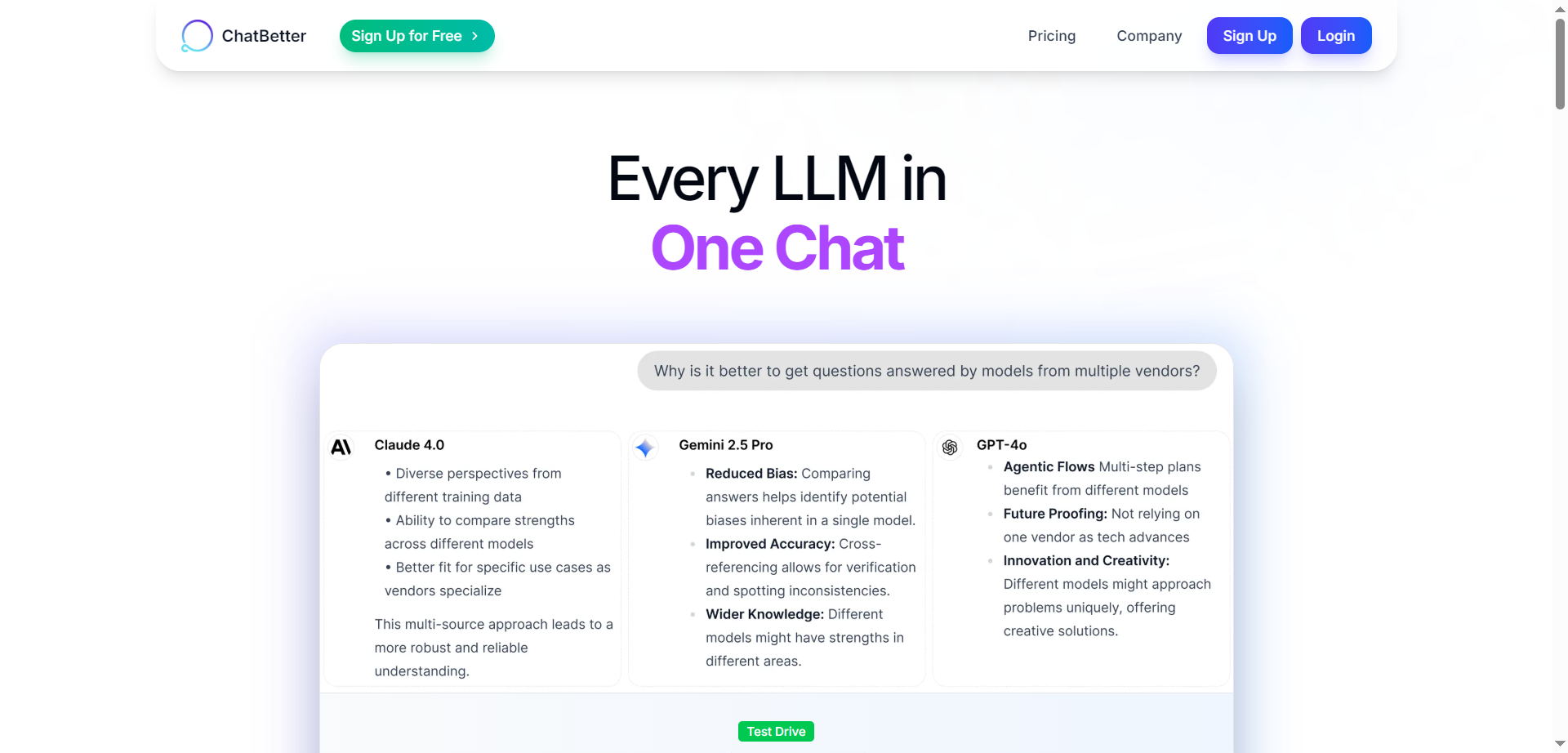
ChatBetter
ChatBetter is an AI platform designed to unify access to all major large language models (LLMs) within a single chat interface. Built for productivity and accuracy, ChatBetter leverages automatic model selection to route every query to the most capable AI—eliminating guesswork about which model to use. Users can directly compare responses from OpenAI, Anthropic, Google, Meta, DeepSeek, Perplexity, Mistral, xAI, and Cohere models side by side, or merge answers for comprehensive insights. The system is crafted for teams and individuals alike, enabling complex research, planning, and writing tasks to be accomplished efficiently in one place.

ChatBetter
ChatBetter is an AI platform designed to unify access to all major large language models (LLMs) within a single chat interface. Built for productivity and accuracy, ChatBetter leverages automatic model selection to route every query to the most capable AI—eliminating guesswork about which model to use. Users can directly compare responses from OpenAI, Anthropic, Google, Meta, DeepSeek, Perplexity, Mistral, xAI, and Cohere models side by side, or merge answers for comprehensive insights. The system is crafted for teams and individuals alike, enabling complex research, planning, and writing tasks to be accomplished efficiently in one place.

ChatBetter
ChatBetter is an AI platform designed to unify access to all major large language models (LLMs) within a single chat interface. Built for productivity and accuracy, ChatBetter leverages automatic model selection to route every query to the most capable AI—eliminating guesswork about which model to use. Users can directly compare responses from OpenAI, Anthropic, Google, Meta, DeepSeek, Perplexity, Mistral, xAI, and Cohere models side by side, or merge answers for comprehensive insights. The system is crafted for teams and individuals alike, enabling complex research, planning, and writing tasks to be accomplished efficiently in one place.
Editorial Note
This page was researched and written by the ATB Editorial Team. Our team researches each AI tool by reviewing its official website, testing features, exploring real use cases, and considering user feedback. Every page is fact-checked and regularly updated to ensure the information stays accurate, neutral, and useful for our readers.
If you have any suggestions or questions, email us at hello@aitoolbook.ai